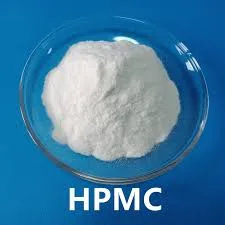
aug . 06, 2024 05:56 Back to list
Understanding the Meaning Behind HPMC and Its Applications in Various Industries
HPMC Stands For Understanding Hydroxypropyl Methylcellulose
In the realm of pharmaceuticals, food production, and various industrial applications, the term HPMC is frequently encountered. HPMC stands for Hydroxypropyl Methylcellulose, a derivative of cellulose that has garnered significant attention due to its versatility and multitude of uses. This article will delve into what HPMC is, its properties, applications, and why it is an essential component in various industries.
Hydroxypropyl Methylcellulose is a semi-synthetic polymer obtained from cellulose, a natural polymer derived from plant cell walls. The production process involves the chemical modification of cellulose through a series of reactions, resulting in a compound that possesses unique functional properties. HPMC is a white to off-white powder that is odorless and tasteless when dry. It is soluble in both cold and hot water, producing a viscous gel, which is one of its most valuable characteristics.
HPMC Stands For Understanding Hydroxypropyl Methylcellulose
In addition to pharmaceuticals, HPMC plays a crucial role in the food industry. It is often utilized as a food additive, where it serves various functions such as a thickener, stabilizer, and emulsifier. HPMC is frequently found in products like sauces, dressings, and dairy products, helping to improve texture and ensure uniform dispersion of ingredients. Moreover, it is also used in gluten-free baking as a replacement for gluten, providing elasticity and structure to doughs and batters.
hpmc stands for

The construction industry has also recognized the importance of HPMC. When used as an additive in cement and tile adhesives, it improves workability and water retention. This ensures that the adhesive remains workable for a more extended period, allowing for better application without compromising performance. HPMC is also utilized in plaster and mortar to enhance adhesion and prevent cracking, making it invaluable in modern construction techniques.
Another noteworthy application of HPMC is in the cosmetic and personal care industry. It is commonly incorporated into products such as shampoos, lotions, and creams, where it serves as a thickening agent and stabilizer. Its ability to retain moisture makes it particularly beneficial in skincare formulations, contributing to effective hydration and texture enhancement.
While HPMC boasts numerous advantages, it is essential to consider safety and regulatory aspects. HPMC has been classified as non-toxic and is generally recognized as safe (GRAS) by regulatory agencies such as the U.S. Food and Drug Administration (FDA). This makes it a suitable choice for various applications across a spectrum of industries.
In conclusion, HPMC, or Hydroxypropyl Methylcellulose, is a versatile and widely used polymer with significant applications in pharmaceuticals, food production, construction, and personal care. Its unique properties allow it to serve multiple functions, from acting as a thickening agent to enhancing product stability. As industries continue to innovate and demand for functional additives grow, HPMC is poised to remain an indispensable component across various sectors. Understanding HPMC and its applications provides valuable insight into how this compound contributes to the quality and effectiveness of products we use daily.
-
Why HPMC is a Key Additive in Wall Putty Formulations
NewsAug.05,2025
-
Redispersible Powder in Decorative Renders: Function Meets Finish
NewsAug.05,2025
-
Redispersible Powder for Interior Wall Putty: Smooth Results Every Time
NewsAug.05,2025
-
HPMC’s Water Retention Capacity in Dry Mortar Applications
NewsAug.05,2025
-
HPMC Factory Contributions to Liquid Detergents
NewsAug.05,2025
-
How HPMC Factory Products Change Detergent Textures
NewsAug.05,2025







